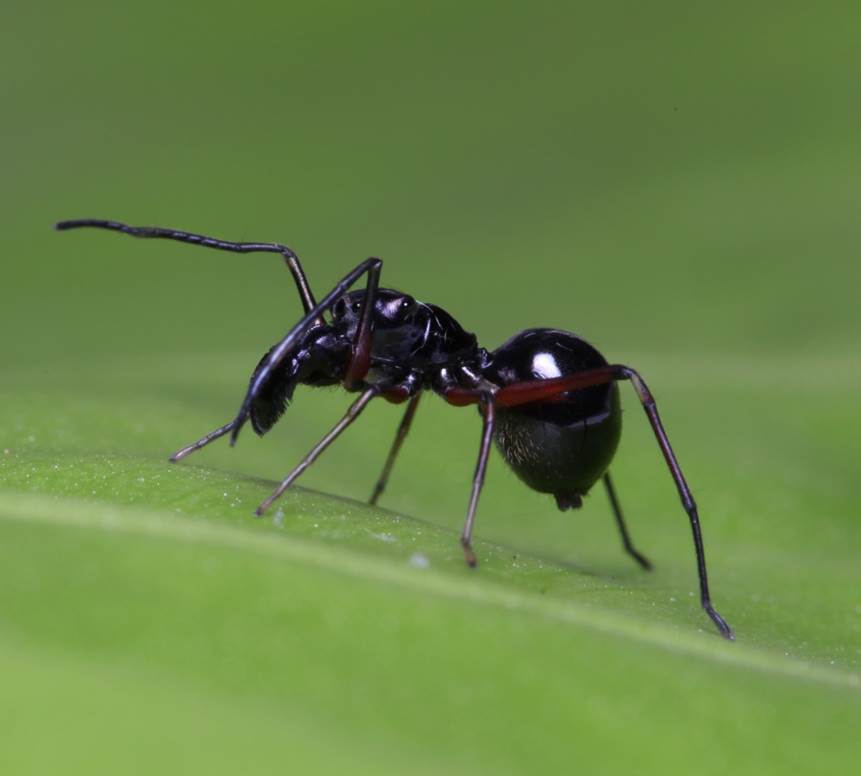Got milk? If you’re a special species of jumping spider, the answer is yes. That’s what scientists discovered when they observed female Toxeus magnus spiders nursing spiderlings with a milky substance for several weeks.
The finding, published Thursday in Science, suggests that despite milk’s strong association with mammals—a group named for its lactating mammary organs—nursing behaviors may be widespread in organisms that we wouldn’t think of as breastfeeders.
Though T. magnus, an Asian spider that mimics ants, does not have traditional mammary hardware like nipples or udders, it does have a small opening in its abdomen called an “epigastric furrow” from which the spider milk flows. This furrow is an organ on the underside of female spiders used to lay eggs.
Samples of the spider's milk were analyzed and found to contain sugar, fat, and about four times as much protein as cow’s milk.
"Our findings demonstrate that mammal-like milk provisioning and parental care for sexually mature offspring have also evolved in invertebrates," said first author Zhanqi Chen, a spider expert at Xishuangbanna Tropical Botanical Garden, in a statement. "We anticipate that our findings will encourage a reevaluation of the evolution of lactation and extended parental care and their occurrences across the animal kingdom."
Chen’s team first noticed there might be something unique about T. magnus spiders during field observations of the arachnids’ unusual nesting behavior. Mother spiders remained in the nest for weeks after their offspring hatched, providing time for the spiderlings to grow and learn foraging skills. This high level of parental investment contrasts with spider species that are left to their own devices as spiderlings, or the delightfully gruesome spiders that eat their parents once they hatch.
To figure out why T. magnus moms seem so devoted to their spider-kids, Chen’s team studied 32 adult females as they nested in laboratory conditions. Once the spiderlings hatched, they stayed put in the nests for around 20 days, before searching for their own food. Throughout this period, the offspring grew even though the mother was not sharing foraged food with them.
Microscopic inspections revealed that the spiderlings were suckling milk droplets from epigastric furrows. Chen’s team conducted several experiments to assess how essential the milk was for spiderling development. The researchers blocked the furrows of some mothers so that newly hatched spiderlings couldn’t suckle. That proved to be universally fatal to the young spiders, with offspring all perishing within 10 days of hatching, demonstrating that this lactation adaptation is essential to T. magnus’ reproductive success.
Of the spiderlings that freely suckled for some 52 days, which is around the time it takes for the species to reach adulthood, the survival rate was an impressive 76 percent. These spiderlings began to supplement their diets with foraged foods about 20 days after hatching, but still frequently nursed from their mothers for several weeks.
URL: https://motherboard.vice.com/en_us/article/wj3gv9/this-jumping-spider-makes-milk

